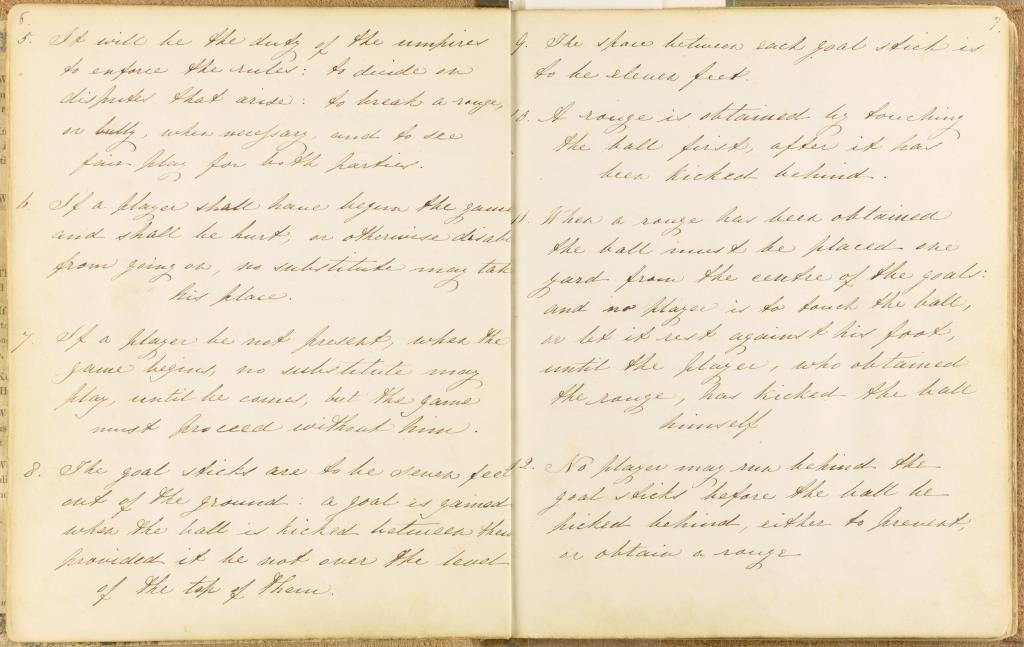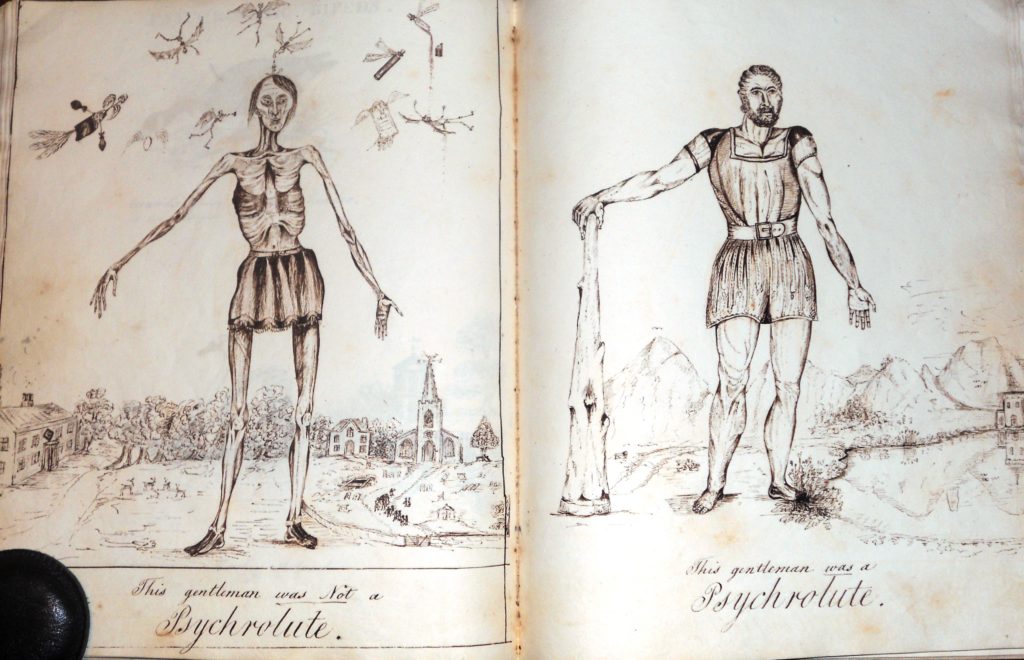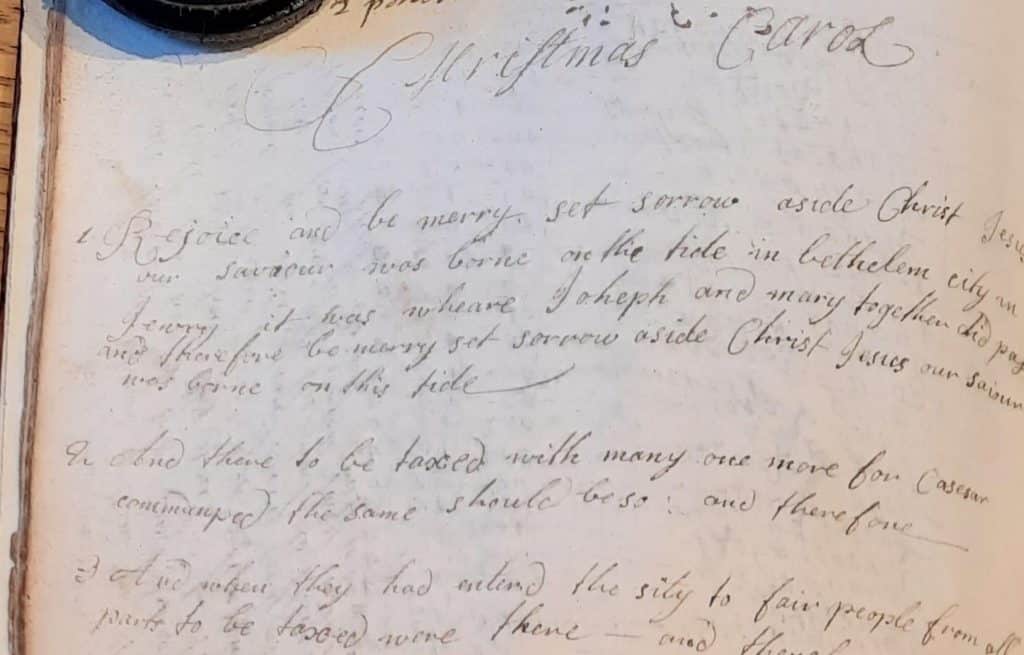
The first written rules for the game, from the Keepers’ Book, 1847
At Eton, boys were largely left to their own devices when it came to sport, deciding for themselves what games they would play and the rules of those games. These are the first written rules for the Field Game, one of two versions of football developed here. They are from the book kept by the Keeper of the Field, beginning in 1847.
These rules include the size of the goal “the goal sticks are to be seven feet out of the ground…the space between each goal stick is to be eleven feet.” They describe a rouge, the bully, how points can be scored, and other rules of play such as “No crawling on the hands and knees with the ball between the legs is allowed.”
The game was incredibly popular, being preferred to association football because, as one boy wrote, “our Eton game is one of our most cherished institutions…also there is the very important question of slackness and loafing, for anybody who did not want to run about energetically could simply give the ball an enormous kick and call it a pass.” Indeed, there was no separate Association team at Eton until 1930, almost 70 years after the game was founded.
Apart from Eton blue, the Field Game was the first sport or society to get official colours, with the red and blue design dating from 1860. More information on school colours can be found in the current display in the Museum of Eton Life.
By Eleanor Hoare, College Archivist



